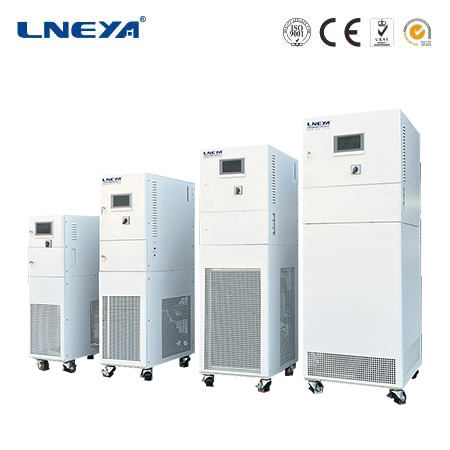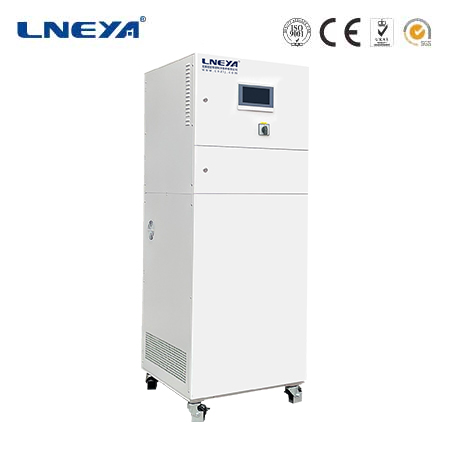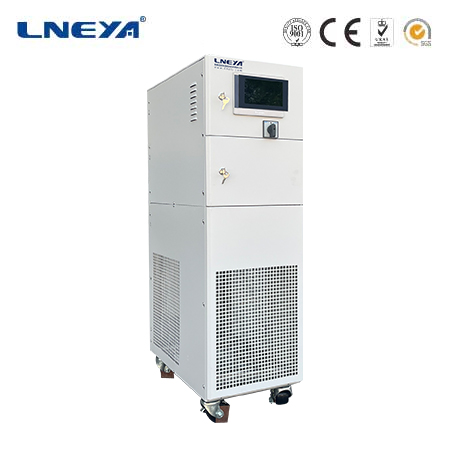temperature control chamber
Temperature Control Chamber: A Comprehensive Guide
Temperature control chambers play a crucial role in numerous industries and scientific research endeavors by providing a controlled environment with precisely regulated temperature conditions. These chambers are essential for ensuring product quality, material stability, and the accuracy of experimental results.

Definition and Basic Function
A temperature control chamber, also known as a thermostatic chamber, is a sealed enclosure engineered to maintain a specific temperature range with high precision. Beyond simply heating or cooling, its primary function is to create a stable thermal environment that can be adjusted and maintained according to the requirements of the specimens or processes inside.
In many cases, temperature control chambers are also capable of regulating other environmental factors such as humidity, air circulation, and sometimes even pressure. This multi – factor control allows for the simulation of various real – world conditions, from arid deserts to humid tropical climates. By isolating the internal environment from external fluctuations, temperature control chambers enable accurate testing, storage, and processing of materials, products, and biological samples.
Types of Temperature Control Chambers
Constant – Temperature Chambers
Constant – temperature chambers are designed to maintain a fixed temperature value. They are ideal for applications where a stable, unchanging temperature is required over an extended period. For example, in the storage of temperature – sensitive chemicals or biological specimens, a constant – temperature chamber set at 4°C can preserve the integrity of these materials by preventing degradation due to temperature variations. These chambers typically have simple control systems that continuously monitor and adjust the temperature to ensure it remains within a narrow tolerance range.
Programmable Temperature Control Chambers
Programmable chambers offer greater flexibility. They allow users to set up a sequence of temperature changes over time, following a pre – defined program. This type of chamber is commonly used in testing scenarios where products need to be subjected to a series of thermal cycles. For instance, in the electronics industry, programmable chambers can simulate the temperature changes a device might experience during transportation from a cold region to a hot one. The chamber can be programmed to start at a low temperature, gradually increase to a high temperature, hold for a certain duration, and then repeat the cycle, enabling comprehensive evaluation of the product’s thermal stability.
Walk – in Temperature Control Chambers
Walk – in chambers are large – scale temperature control systems, often used when there is a need to test or store large quantities of products or conduct experiments on a grander scale. These chambers are spacious enough for technicians to enter and work inside while the temperature is controlled. They are widely used in industries such as food processing, where large batches of food products need to be cooled or stored at specific temperatures. Walk – in chambers can also be customized to include additional features like humidity control, air filtration, and lighting systems to meet diverse application requirements.

Miniature Temperature Control Chambers
Miniature or benchtop temperature control chambers are compact in size, designed for applications that require temperature control on a small scale. They are commonly used in laboratories for testing small components, conducting research on a limited number of samples, or for applications where space is at a premium. Despite their small size, they can still offer high – precision temperature control, making them suitable for tasks such as incubating small biological cultures or testing the thermal response of miniature electronic devices.
Working Principles
Refrigeration System
Most temperature control chambers utilize a refrigeration system similar to that of household refrigerators and air conditioners. The system consists of a compressor, condenser, expansion valve, and evaporator. The compressor raises the pressure and temperature of the refrigerant gas. The hot, high – pressure gas then flows to the condenser, where it releases heat to the surrounding environment and condenses into a liquid. The liquid refrigerant passes through the expansion valve, which reduces its pressure and causes it to cool down significantly. Finally, the cold refrigerant enters the evaporator inside the chamber, absorbing heat from the chamber’s interior and thus lowering the temperature. The refrigerant then returns to the compressor to repeat the cycle.
Heating Elements
To increase the temperature inside the chamber, heating elements are used. These can be in the form of electrical resistance heaters, where an electric current passing through a resistive material generates heat. The heating elements are controlled by a thermostat or a more advanced control system. When the temperature inside the chamber drops below the set point, the control system activates the heating elements to raise the temperature back to the desired level.
Thermal Insulation
Effective thermal insulation is crucial for maintaining the desired temperature within the chamber. The walls, doors, and other components of the chamber are constructed using insulating materials such as polyurethane foam or fiberglass. These materials reduce the transfer of heat between the interior and exterior of the chamber, minimizing energy consumption and ensuring that the temperature remains stable even when there are significant temperature differences outside.
Control Systems
Modern temperature control chambers are equipped with sophisticated control systems. These systems typically include temperature sensors that continuously monitor the internal temperature of the chamber. The sensor data is sent to a controller, which compares the measured temperature with the set point. Based on the difference, the controller adjusts the operation of the refrigeration system, heating elements, and other components to maintain the desired temperature. Some advanced control systems also offer features such as remote monitoring and control, data logging, and the ability to interface with other laboratory equipment or software for more comprehensive experimentation and analysis.
Applications
Pharmaceutical Industry
In the pharmaceutical sector, temperature control chambers are vital for various processes. During drug development, they are used to test the stability of drugs under different temperature conditions to determine their shelf life. For example, new drug formulations may be stored in temperature – controlled chambers at elevated temperatures (such as 40°C) and high humidity levels to accelerate the aging process and predict how the drugs will degrade over time. Additionally, temperature control chambers are essential for the storage of finished pharmaceutical products, especially those that are temperature – sensitive, like vaccines, which need to be stored at specific low temperatures (e.g., 2 – 8°C) to maintain their efficacy and safety.

Electronics Industry
The electronics industry relies on temperature control chambers for product testing and quality assurance. Electronic components and devices are subjected to a variety of temperature tests to ensure their reliability. For instance, thermal cycling tests in temperature control chambers can simulate the extreme temperature changes a device might encounter during its lifetime, from the cold of a winter morning to the heat of a summer afternoon. These tests help identify potential weaknesses in the design, such as solder joint failures or material expansion and contraction issues, which could lead to product malfunctions in the field. Temperature – controlled environments are also used during the manufacturing process of some high – precision electronic components to ensure consistent quality.
Food Processing and Storage
In food processing, temperature control chambers are used for tasks such as freezing, chilling, and drying food products. For example, in a meat processing plant, large walk – in temperature control chambers are used to freeze and store meat at sub – zero temperatures to extend its shelf life and maintain its quality. In the production of baked goods, temperature – controlled chambers can be used to proof dough at a specific temperature and humidity, ensuring proper fermentation and texture. Additionally, temperature control is crucial for the storage of perishable food items in supermarkets and warehouses, preventing spoilage and maintaining food safety.
Scientific Research
Temperature control chambers are indispensable in scientific research across multiple disciplines. In biology, they are used for cell culture, where maintaining a constant temperature is essential for the growth and survival of cells. In materials science, researchers use temperature control chambers to study the thermal properties of materials, such as how they expand, contract, or change their physical and chemical characteristics at different temperatures. In environmental science, temperature – controlled chambers can be used to simulate climate change scenarios, allowing scientists to study the impact of rising temperatures on plants, animals, and ecosystems.
Aerospace and Defense
In the aerospace and defense industries, temperature control chambers are used to test the performance of aircraft components, avionics systems, and military equipment under extreme temperature conditions. These tests help ensure that the equipment can function reliably in the harsh environments encountered during flight, such as the freezing temperatures at high altitudes or the intense heat generated during re – entry into the Earth’s atmosphere. Temperature control chambers also play a role in the storage of sensitive military materials and equipment, protecting them from temperature – induced damage.
Maintenance and Calibration
Regular Maintenance
To ensure the optimal performance of temperature control chambers, regular maintenance is essential. This includes cleaning the interior and exterior of the chamber to remove dust, debris, and any contaminants that could affect the temperature control or the integrity of the specimens inside. The refrigeration system, heating elements, and fans should be inspected regularly for signs of wear, leaks, or malfunction. Lubricating moving parts, replacing filters, and checking electrical connections are also important maintenance tasks. Additionally, the insulation of the chamber should be periodically inspected to ensure it is still effective in preventing heat transfer.
Calibration
Calibration is the process of adjusting the temperature control chamber to ensure that the displayed temperature accurately reflects the actual temperature inside. Over time, the temperature sensors and control systems may drift, leading to inaccurate temperature readings. Regular calibration, typically performed using a calibrated thermometer or a temperature – calibration device, helps correct these inaccuracies. Calibration should be carried out according to the manufacturer’s recommended schedule or more frequently if the chamber is used for critical applications where precise temperature control is of utmost importance.
In conclusion, temperature control chambers are essential tools in a wide range of industries and scientific research fields. Their ability to provide a precisely regulated thermal environment ensures the quality, reliability, and safety of products, as well as the accuracy of experimental results. Understanding their types, working principles, applications, and maintenance requirements is crucial for maximizing their effectiveness and ensuring the success of various processes that rely on consistent temperature conditions.
Related recommendations
difference between chiller and cooler
524Difference between Chiller and Cooler In the realm of cooling technology, the terms "chiller" and "cooler" are often used, but they refer to different types of equipment with distinct character...
View detailsheating and cooling water
480Heating and Cooling Water Systems: Vital for Temperature Regulation Water is a versatile medium for temperature control in numerous industries. Heating and cooling water systems are designed to...
View detailsprocess water heater
429Understanding Process Water Heaters Process water heaters are essential in many industrial settings, where they provide heated water for a variety of applications. These applications can range ...
View detailsheating and cooling control systems
481Introduction to Heating and Cooling Control SystemsHeating and cooling control systems are critical components of modern HVAC systems, allowing for precise temperature regulation and energy manage...
View details
 LNEYA Thermal Test Chillers
LNEYA Thermal Test Chillers






HelloPlease log in